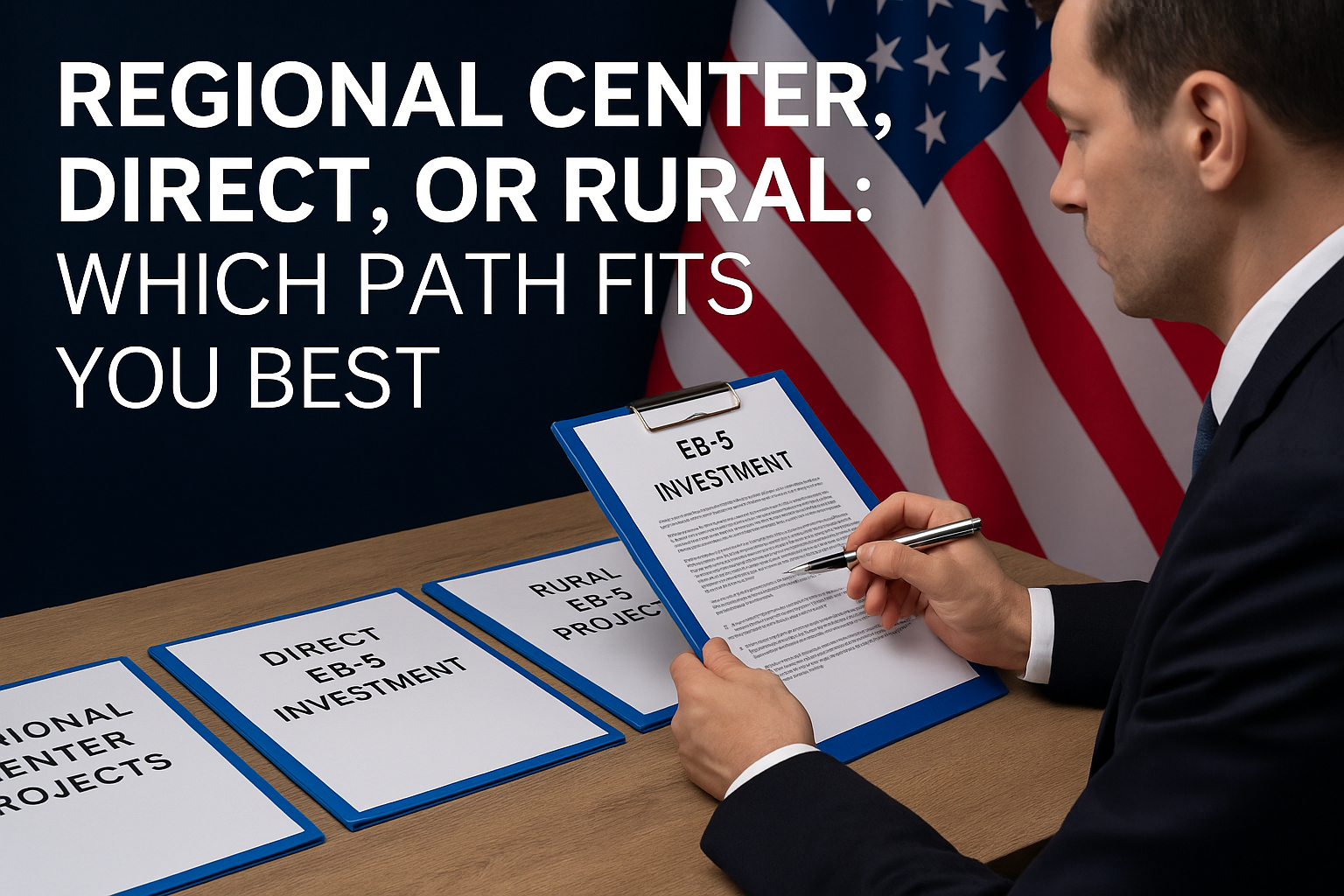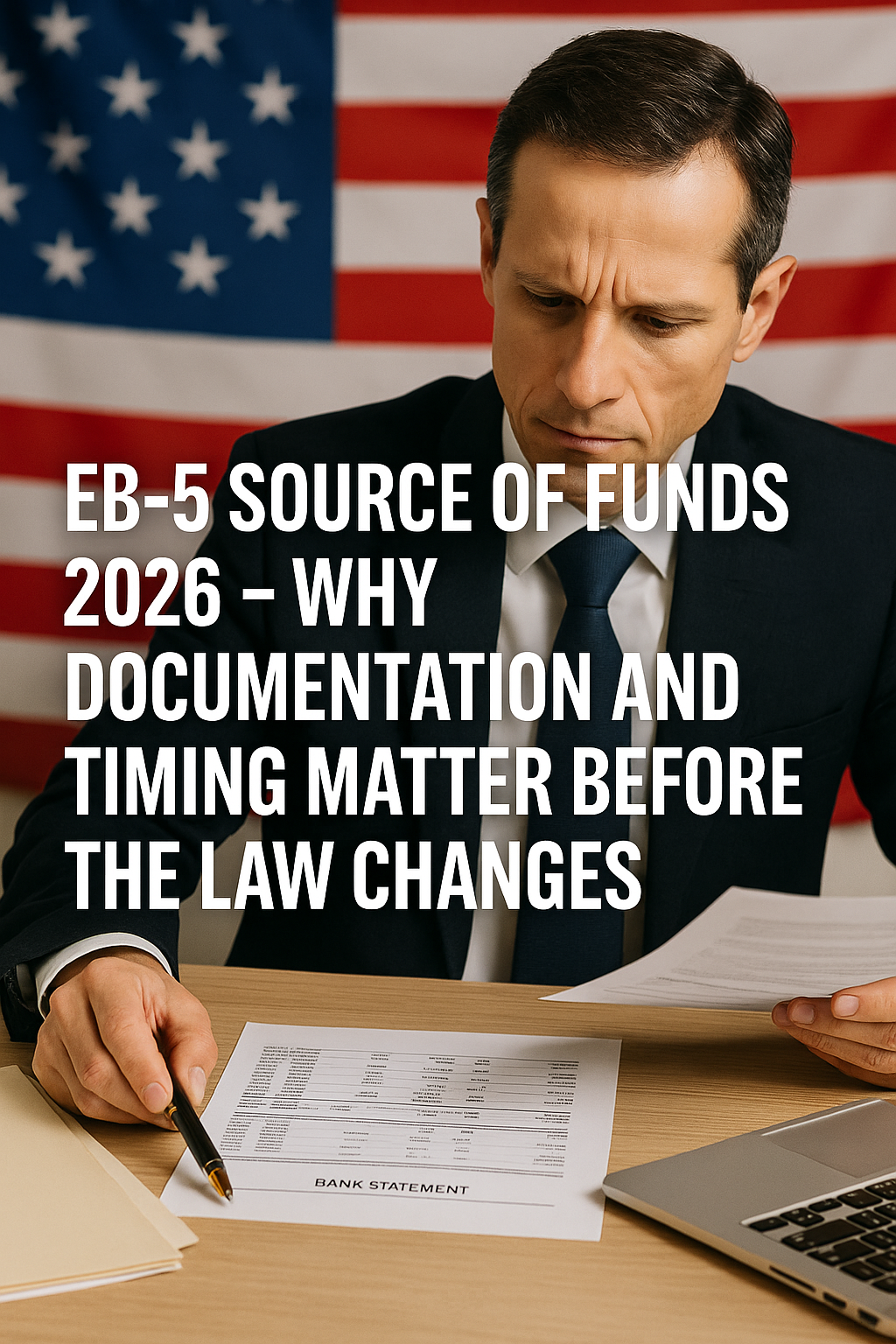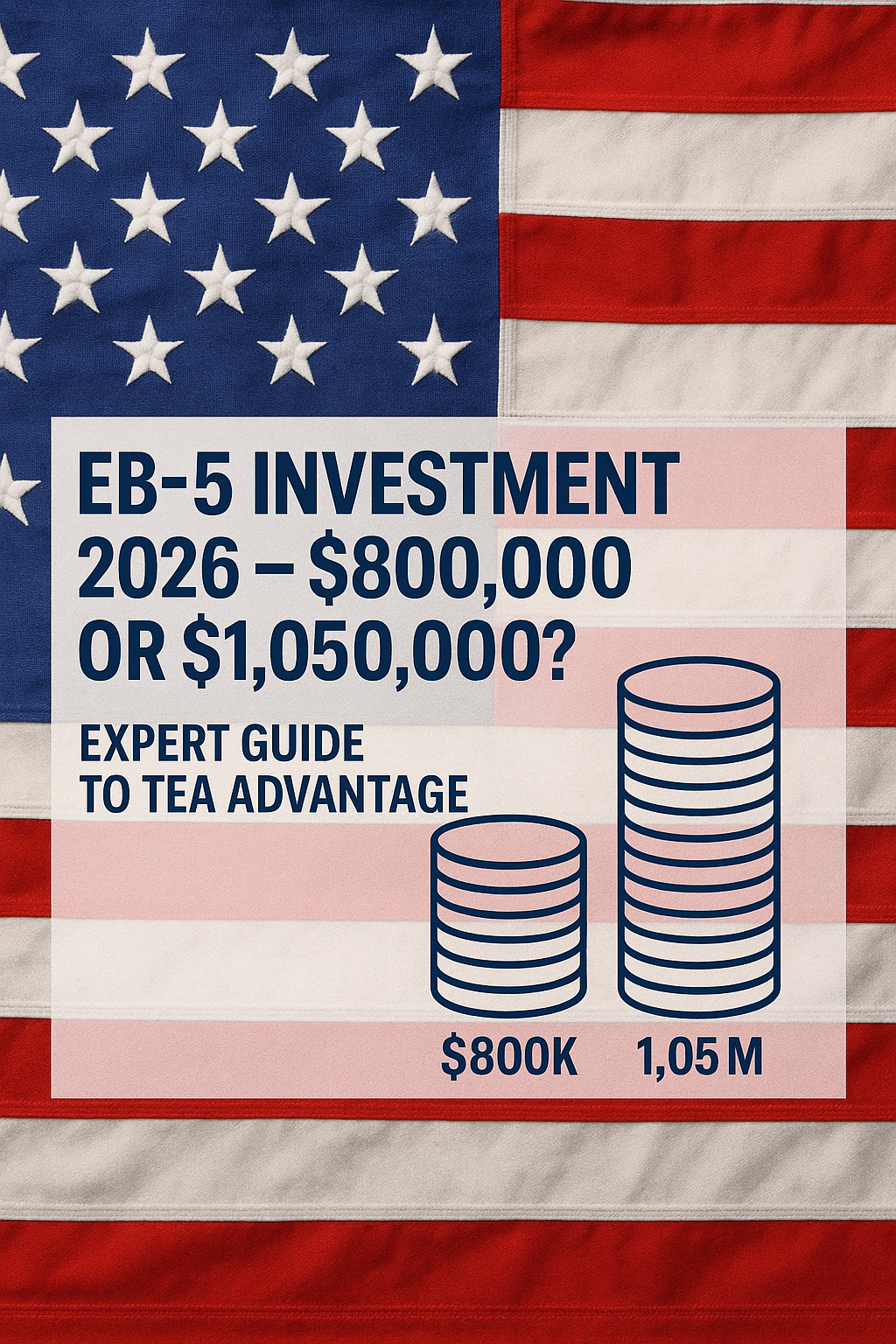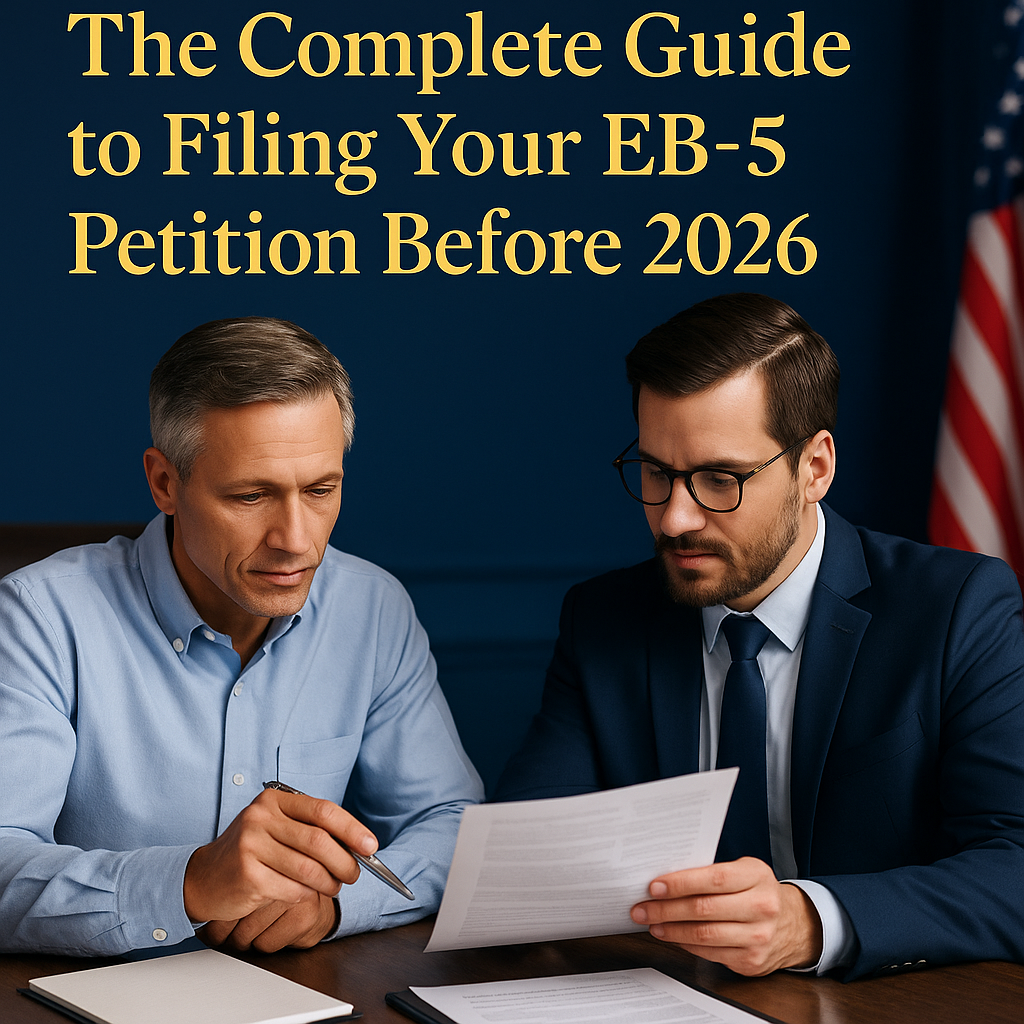Did you know you can save $15,000 – $30,000 on the EB-3 Visa and get a U.S. Green Card by applying yourself – NO agent, NO hidden fees, NO extra payments?
The EB-3 Visa Tutorial Series 2025: How to Get a U.S. Green Card by Yourself and Save Thousands
Read the next article, Step 2: How to Find a Genuine EB-3 Sponsor and Avoid Scams
For decades, the United States has represented opportunity, a place where hard work, education, and skill can translate into lasting success. Yet, for millions of people around the world, the path to obtaining a U.S. Green Card seems complicated, expensive, and out of reach.
The EB-3 Visa challenges that belief. This employment-based immigration program enables foreign nationals to obtain permanent residency in the United States without incurring substantial investment costs or relying on expensive intermediaries.
While many applicants pay agencies or lawyers between USD 10,000 and 20,000 or more, the truth is that you can apply for the EB-3 Visa yourself. By paying only official government fees, the total cost typically ranges from USD 2,000 to 3,000, a fraction of what most people spend.
In this article, The Immigration Magazine explains what the EB-3 Visa is, who qualifies for it, how it works, and why it remains one of the most accessible routes to U.S. permanent residency in 2025. And more importantly, this series is for a tutorial on “how you can apply for EB-3 by yourself”.

The EB-3 Visa opens a direct path to permanent U.S. residency through employment.
What Is the EB-3 Visa?
The EB-3 Visa, formally known as the Employment-Based Third Preference Category, is a U.S. immigrant visa that leads directly to a Green Card. It was created under the Immigration and Nationality Act to allow American employers to hire qualified foreign workers when there are not enough U.S. citizens or permanent residents available to fill certain jobs.
Unlike the EB-5 Investor Visa, which requires a minimum investment of hundreds of thousands of dollars, the EB-3 program is based entirely on employment and skills. Applicants qualify by obtaining a legitimate full-time job offer from a U.S. employer who is willing to sponsor their immigration petition.
Once approved, the EB-3 Visa grants lawful permanent residence, allowing the individual and their eligible family members to live, work, and study anywhere in the United States.
EB-3 Visa Categories
The EB-3 classification is divided into three distinct subcategories: Skilled Workers, Professionals, and Other Workers.
1. Skilled Workers (EB-3 Skilled)
Applicants must have at least two years of relevant work experience or training in their occupation. The job position must require those specific skills, and the employer must verify that there are no qualified U.S. workers available for the role.
Common examples include technicians, welders, chefs, supervisors, tailors, and electricians.
2. Professionals (EB-3 Professional)
Applicants must hold at least a U.S. bachelor’s degree or its foreign equivalent. The offered position must require that degree as a minimum entry qualification.
Typical professions include engineers, teachers, accountants, architects, and healthcare specialists.
3. Other Workers (EB-3 Unskilled or EW-3)
This category encompasses unskilled or low-skill positions that require less than two years of experience or training. Examples include hotel attendants, factory operators, cleaners, caregivers, agricultural workers, and food processing staff.
The “Other Worker” category is highly popular but also experiences longer waiting periods due to demand.

Three EB-3 categories serve skilled, professional, and other workers worldwide.
Basic Eligibility Requirements
To qualify for the EB-3 Visa, both the foreign worker and the U.S. employer must meet specific legal standards.
For the Applicant
- Possess the education, skills, or work experience required for the job.
- Receive a full-time, permanent job offer from a qualified U.S. employer.
- Pass medical, background, and security screenings.
- Be able to complete the process either within the U.S. (Adjustment of Status) or from abroad (Consular Processing).
For the Employer
- Obtain a PERM Labor Certification from the U.S. Department of Labor (DOL). This document confirms that there are no willing and qualified U.S. workers available for the job.
- Demonstrate the financial ability to pay the offered wage from the date the labor certification is filed.
- File Form I-140 (Immigrant Petition for Alien Worker) with the U.S. Citizenship and Immigration Services (USCIS) on behalf of the employee.
Step-by-Step Process Overview
Although the EB-3 process involves multiple stages, each step is clearly defined under U.S. immigration law.
Step 1: PERM Labor Certification
The U.S. employer must first obtain a Labor Certification from the Department of Labor. This involves a regulated recruitment process to test the local labor market. If no qualified American worker is available, the DOL certifies the position for sponsorship.
Step 2: I-140 Petition Filing
Once the PERM certification is approved, the employer files Form I-140 with USCIS. This form establishes the worker’s eligibility for an immigrant visa and the employer’s financial capacity to support the offer.
Step 3: Waiting for Priority Date
Every EB-3 case is assigned a priority date, which determines when the applicant can move to the next stage. The Visa Bulletin, published monthly by the U.S. Department of State, shows when these dates become current.
Step 4: Green Card Application
When the priority date is current, the applicant can either file Form I-485 (if already in the U.S.) or complete Consular Processing (if outside the U.S.) at a U.S. embassy or consulate.
Upon approval, the applicant and eligible family members receive permanent resident status.
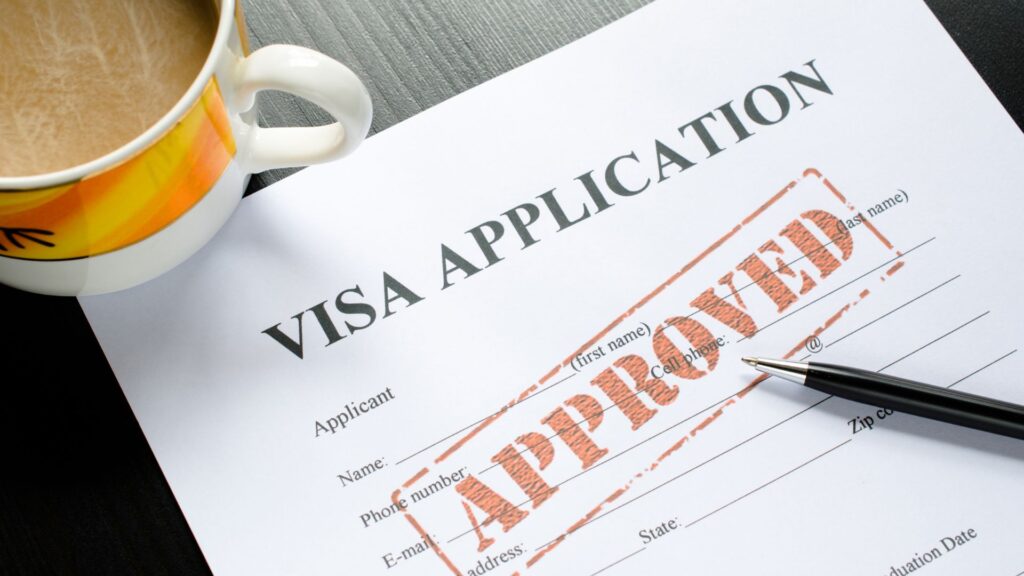
You can do it yourself — or get expert help from licensed partners.
Processing Timeline
The full EB-3 process can vary depending on nationality and workload at the Department of Labor and USCIS.
| Stage | Estimated Duration |
| PERM Labor Certification | 6–9 months |
| I-140 Petition Review | 6–12 months |
| Visa Bulletin Waiting Period | 0–24 months (varies by country) |
| Adjustment of Status / Consular Processing | 6–12 months |
Most applicants complete the process in approximately 18 to 36 months, or it can take 3 – 7 years, depending on the Visa Bulletin Waiting Period of your country.
Cost Breakdown (2025 Estimate)
Applying directly through official U.S. government channels is far less costly than hiring intermediaries.
|
Stage |
Government Fee (USD) |
Notes |
|
PERM Labor Certification |
$0 |
Filed by the employer with DOL |
|
Form I-140 |
$700 |
Main immigrant petition fee |
|
Adjustment of Status or Consular Processing |
$1,140 – $1,500 |
Depends on the applicant’s location |
| Medical Exam & Miscellaneous |
$300 – $500 |
Approximate additional costs |
Total estimated self-application cost: $2,000 – $3,000
Average agent or lawyer fee: $10,000 – $20,000+
By following official procedures and handling the paperwork directly, applicants can save up to $15,000 or more.
Key Advantages of the EB-3 Visa
- Direct route to U.S. permanent residency.
- Family inclusion: spouses and unmarried children under 21 are eligible for derivative Green Cards.
- No investment requirement.
- Freedom to live and work anywhere in the U.S.
- Path to citizenship: eligible to apply for naturalization after five years.
Common Misconceptions
Myth 1: You must be in the U.S. to apply.
This is false. Many successful EB-3 applicants complete the process through Consular Processing while living abroad.
Myth 2: Only highly educated individuals qualify.
The EB-3 Visa includes an “Other Worker” category specifically for unskilled labor.
Myth 3: You need an agency to manage your case.
All EB-3 forms and procedures are publicly available on uscis.gov and dol.gov. Applicants who take the time to understand the steps can manage their own filings legally and efficiently.
Expert Commentary
Immigration attorneys often describe the EB-3 Visa as one of the most underutilized yet achievable pathways to the United States.
Unlike investor or lottery programs, the EB-3 system is grounded in the American job market. As long as the employer’s documentation is accurate and the applicant’s qualifications align with the job, approval rates remain strong.
In recent years, more applicants have chosen to manage their own EB-3 filings, reducing unnecessary costs while maintaining full compliance with U.S. regulations. The process demands patience, precision, and transparency, but not an expensive intermediary.
Can You Do It Yourself or Hire an Expert?
The EB-3 Visa process is transparent and manageable for those who can follow instructions and prepare accurate documents. However, if you find English or legal forms challenging—or simply prefer professional assistance—we recommend working with a licensed immigration lawyer or authorized agency.
The Immigration Magazine collaborates with verified partners worldwide who maintain ethical and legal standards. Our goal is to empower you to apply independently if you wish, while supporting our trusted professional network for those who need expert representation.
Conclusion
The EB-3 Visa stands out as a realistic, legal, and cost-effective path to the American Dream. It is open to professionals, skilled workers, and even entry-level employees who can secure genuine employment from a U.S. sponsor.
By understanding the requirements and taking ownership of the process, applicants can save tens of thousands of dollars and achieve the same result: a U.S. Green Card that offers stability, opportunity, and a future in one of the world’s most dynamic economies.
Read the next article, Step 2: How to Find a Genuine EB-3 Sponsor and Avoid Scams
Our next article will provide a detailed roadmap for identifying legitimate U.S. employers, verifying sponsorship offers, and protecting yourself from fraudulent recruiters.
If you found this series useful, follow The Immigration Magazine for free EB-3 resources, legal insights, and interviews with immigration experts. We regularly publish updates on policy changes, success stories, and practical how-to guides for global residency and citizenship programs.
Follow us for more and connect with us on LinkedIn/ Facebook for weekly immigration news.




